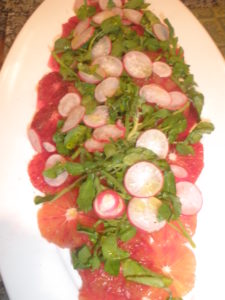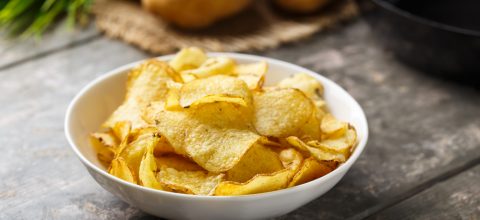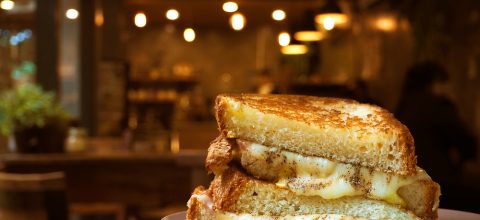I write and develop a lot of menus over the course of a year. From small little snacks to elaborate menus for a fundraising gala based on a specific theme. After all these years some of the questions I ask myself when thinking about what to serve are instinctive and come very natural to me. I want to stop for a minute and take some time to write down the process I go through when putting together a menu. In this case it was putting together a menu for new year’s eve for my family and best friends.
I break down the menu writing process into several steps:
- Inspiration or Directive
- Research and Experience
- Selection of Ingredients
- Adaptation and Natural Flow
- Execution
The process started with a vision of a 10-year-old girl who would be there for the evening. She said “can we make home-made pizza?” Great, that starts the process. A direction, a request or need. Immediately I start thinking about homemade dough. Next I consider the fact that there will be a diverse group of ages at the party and it’s also New Year’s Eve. Being family and friends the event is going casual, kids are not going to want everything that the adults want. So make your own toppings are the key to satisfying those finicky palates. To keep the rest of the meal fun and in the theme of pizzas, the obvious choice is an antipasto table. Small dishes with lots of flavors, colors and textures. Things that you can eat throughout the night. So there you go, pizza and antipasto. It’s not as easy as that, there are always sticks in the road that cause you to make adjustments. That night the majority of the group will be going out to see the city lights so when they get back they will be hungry so the menu has to be room temperature and ready to go.
With the concept in place your experience comes into play. As a chef you need to continually remember details of everything you cook. Some chefs are prodigious writers, I have a pretty good memory but on occasions I tap into my extensive cookbook library and look for inspiration. You need to understand your diner’s. allergies, phobias, cultural preferences and their palates. I take pride in remembering those details about my guests. This is one of those questions; “who are my guests”, that a good menu writer should ask themselves. The best menu writers think about what their guests like, not what they like or not like to eat. In our case, I know that everyone there likes beets, so beets have to be somewhere on the menu. If another person was writing the menu and they didn’t like beets they may even consider not even offering them. Making your guests happy is paramount. Every time a cook for this group I put my heart and soul into each dish. I think about the details. I tap into my memory and experiences and start building a mental image of the food. What does an antipasto table look like? I see pictures in my mind of small platters of marinated vegetables, sliced meats, small salads and a glass of wine. These images start to blend flavors and techniques. Since we are not in Italy and I am not Italian, the food that I will end up producing will be my interpretation of an Italian table. It will be a vision of my personal influences, style and ingredients that I consider right for the time of year. One of the problems I see all the time is that chef’s think since they use Italian tomatoes from a can and imported olive oil they think they are cooking Italian. It is far from the case. You need to research and understand the culture, local ingredients and techniques from a particular country. It would be truly difficult to cook real Italian food in the US as it would be impossible to have everything single ingredient in your restaurant produced in Italy.
Then its shopping time, this is where things get tricky. I shop in a lot of different stores, markets and grocery stores. Is don’t stay committed to one in particular. The reason is that the products in those stores guide me and tell me what to cook. As the old adage says “the best laid plans of mice and men” meaning that you can plan on something and because of unforeseen reasons you fail to find something on your shopping list. You need to have several sources of ingredients and products. I see time and time again, cooks both professional and home getting frustrated because they can’t find a particular ingredient. For me, if I can’t get it, move on and make something else. You can’t get locked into something. Ingredients change constant from day-to-day and season to season. The only thing that you can rely on in todays grocery stores is processed foods. They are designed and engineered to be the same no matter what time of year. That is a completely different essay. So when writing menus, you need to be flexible.
 That then brings us into adaptation. Shopping will give you the ability to select the best quality ingredients you can get that day. It will be up to the chef to adjust from the original design in manipulating flavors but not adapting techniques. For example, antipasto tables have marinated vegetables. If it is summer I think tomatoes, basil and fresh mozzarella. The Caprese salad is made by slicing tomatoes and cheese and drizzling with salt, olive oil and basil. Pure simplicity. Now for us, sliced tomatoes on a cold winters night doesn’t make sense. However if I went to a typical Italian restaurant, I bet I would find one on the menu. For me, I saw fresh blood oranges, pistachios, watercress and shaved radishes. The presentation would be the same, sliced orange topped with a drizzle of vinegar and the other ingredients. This is an adaptation of a technique using seasonal ingredients. It wasn’t a pre-written menu that dictated what I made, it was the blood orange. When I compete in culinary competitions, we are given a”mystery basket” of ingredients and have a very short time to create a menu. For many chef’s this is a difficult task. Shows like Food Networks Chopped show us how chef’s handle this pressure. Some do well and some fail miserably. The secret is natural flow. Certain items just work together. Nature and human culture have developed local cuisine over thousands of years. If you think antipasto and mediterranean flavors, tastes such as garlic, olive oil, capers, anchovies, eggplant and red wine vinegar all start to excite the mental taste buds. Winter I think braising, roasting, dry herbs and concentrated flavors. So braised eggplant caponata with celery and capers. Slow cooked for several hours and served with bruschetta and olives.
That then brings us into adaptation. Shopping will give you the ability to select the best quality ingredients you can get that day. It will be up to the chef to adjust from the original design in manipulating flavors but not adapting techniques. For example, antipasto tables have marinated vegetables. If it is summer I think tomatoes, basil and fresh mozzarella. The Caprese salad is made by slicing tomatoes and cheese and drizzling with salt, olive oil and basil. Pure simplicity. Now for us, sliced tomatoes on a cold winters night doesn’t make sense. However if I went to a typical Italian restaurant, I bet I would find one on the menu. For me, I saw fresh blood oranges, pistachios, watercress and shaved radishes. The presentation would be the same, sliced orange topped with a drizzle of vinegar and the other ingredients. This is an adaptation of a technique using seasonal ingredients. It wasn’t a pre-written menu that dictated what I made, it was the blood orange. When I compete in culinary competitions, we are given a”mystery basket” of ingredients and have a very short time to create a menu. For many chef’s this is a difficult task. Shows like Food Networks Chopped show us how chef’s handle this pressure. Some do well and some fail miserably. The secret is natural flow. Certain items just work together. Nature and human culture have developed local cuisine over thousands of years. If you think antipasto and mediterranean flavors, tastes such as garlic, olive oil, capers, anchovies, eggplant and red wine vinegar all start to excite the mental taste buds. Winter I think braising, roasting, dry herbs and concentrated flavors. So braised eggplant caponata with celery and capers. Slow cooked for several hours and served with bruschetta and olives.
Finally, it’s time to cook the menu. I can tell you at this point what is in my head and heart may not be what I end up with. I do know that what ever I end up making it will de done using the proper technique, skill and thought. This is the beauty of cooking. It all comes down to the last plate you make. It will have been created from an inspiration, constructed by reasearch and experience in the kitchen, the quality of the product you buy and the passion you put into making the food.
Menu writing is a culmination of many things but take it with a grain of salt. Don’t be the one so focused that you can’t make adjustments along the way.
Happy New Year.










